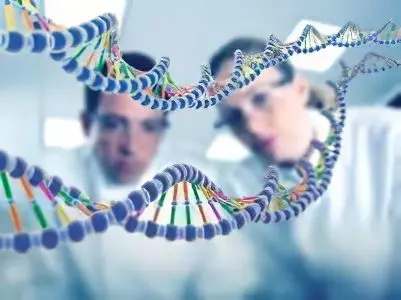Contents
Is Down syndrome a disease?

Down syndrome is a genetic anomaly, a congenital chromosomal disease that occurs due to an increase in the number of chromosomes.
Such a violation occurs quite often – in 1 child out of 650 newborns. These deviations in some medical sources are called “Down’s disease”, but scientists think differently and the term Down syndrome means a certain set of features and signs that were described by the English doctor John Down in 1866.
Causes of Down syndrome
After 93 years in 1959, the French scientist Gerard Lejeune revealed the true cause of the syndrome – the appearance of an extra chromosome. The cells of the human body contain 46 chromosomes, which contain traits that are inherited from the parents to the embryo. A chromosome set is the same number of paired chromosomes, male and female. In children born with Down syndrome, the 21st pair has an extra chromosome, resulting in the presence of 47 chromosomes. This is the main reason for the development of Down syndrome.
Numerous studies confirm the dependence of the frequency of Down syndrome on the age of the mother, the average age of women who have given birth to sick children is 33 years and above. But there are cases when 19-year-old young mothers give birth to children with such a pathology.
Down syndrome symptoms
Down syndrome symptoms can be seen already at the birth of a newborn baby. The characteristic physical differences are pronounced and clearly visible in appearance: a flat face, an oblique section of the eyes, a fold on the upper eyelid, an irregular shape of the skull, a flat nape, small ears, short lower and upper limbs, short fingers, a curved little finger, there is a transverse fold on palms.
Unusual, as they are called “sunny children”, often have heart defects, they are characterized by inhibition and distortion of bone growth, mental retardation, reduced muscle tone, and impaired coordination of movements. Such guys later begin to walk, talk, but many of them have an ear for music, they are very cheerful, affectionate and helpful.
Down syndrome forms
1. Trisomy means having three chromosomes instead of two. Research analyzes have confirmed that an extra chromosome of the autosome group leads to an abnormal development of the embryo. The occurrence of Down’s disease is associated with the “wear and tear” of the female body and diseases of the genital organs, with episodes in a woman’s life when there was a birth of dead children or those who died at an early age.
2. Translocation Down Syndrome the transfer of a gene or a fragment of a chromosome to a different position on the same or a different chromosome. The 13-15th and 21-22nd autosomes are involved in the translocation, but the number of chromosomes in the set remains equal to 46. The probability of having a sick child in this case depends on the father – the carrier of the mutation, and not on the age of the mother.
Babies with translocation syndrome make up 5% of the total number of children with Down’s disease.
3. Down syndrome with mosaicism
Mosaicism – the third type of chromosomal abnormalities is expressed by the presence in some cells of the normal number of chromosomes 46, and in others – 47 chromosomes, i.e. trisomy for the 21st pair of chromosomes. The frequency of this phenomenon is 1% of the total number of children with Down syndrome. Some children have pronounced typical features of the pathology or mild ones. They are intellectually stronger than children with translocation Down syndrome. The occurrence of an abnormal set of chromosomes is associated with a violation of some phases of meiosis. At the age of 35, a woman’s body undergoes a change in hormonal balance and changes in the formation of eggs.
Down syndrome treatment

First of all, attention should be paid to the examination of parents before the birth of the child. Consultations of geneticists will determine the risk of having a sick child. One of the most common genetic disorders, Down syndrome is considered incurable.
In most children suffering from this pathology, blood and urine parameters change, the activity of enzymes in the blood serum increases, and the content of amino acids in the urine and blood increases. There are conduction disturbances and serious heart rhythm disturbances.
The treatment of Down syndrome is lifelong, it does not consist in getting rid of chromosomal pathology, but in the treatment of concomitant diseases and malformations.
The main treatment is aimed at social and family adaptation. With careful care and patience, children learn simple human skills (sitting, walking, talking). They can go to both general education and special schools (preferably both). In an ordinary school, a child learns to communicate with other children, develops and strives to imitate classmates in everything. Subsequently, such children can receive a secondary vocational education. The main thing in caring for a special child is the attention and love of parents.
To support the central nervous system, “downyats” are prescribed drugs that improve blood circulation in the brain:
Cerebrolysin
Pyracetam
B vitamins;
Aminolone
In addition to all this, the development of children with Down syndrome has a positive effect on the inculcation of self-care skills, classes with a speech therapist, and communication with children.
Note: any of the listed medicines can be taken only after consulting a doctor!









